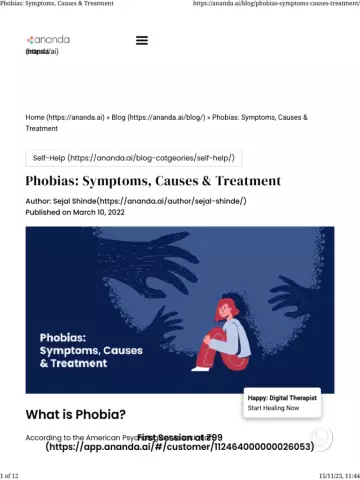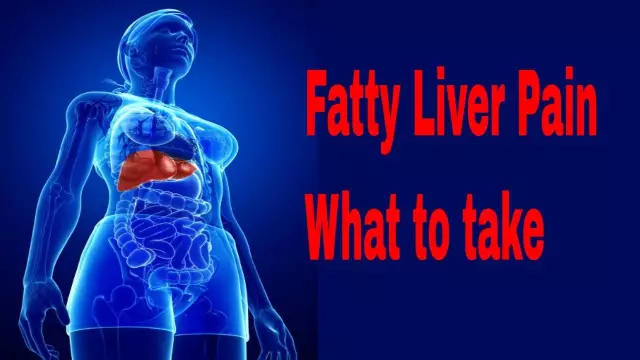- Author Rachel Wainwright [email protected].
- Public 2023-12-15 07:39.
- Last modified 2025-11-02 20:14.
Blepharospasm
The content of the article:
- Causes
- Forms
- Signs
- Diagnostics
- Treatment
- Prevention
- Consequences and complications
Blepharospasm is an involuntary contraction (spasm) of the circular muscle of the eye, as a result of which the eyelids close. It is more common in women over 20 years old.
For a long time, blepharospasm was considered one of the manifestations of psychological disorders. It began to be classified as a physical disorder only in 1985, after this pathology was described in detail in one of the scientific journals and defined as benign essential blepharospasm.

Spasm of the circular muscle of the eye with blepharospasm
Causes
The pathological mechanism of the development of blepharospasm is currently unknown. Most researchers believe that spastic contraction of the circular muscles of the eye can lead to damage to the basal nuclei of the brain.
Blepharospasm often occurs against the background of:
- Parkinson's disease;
- taking antipsychotics;
- trichiasis;
- supranuclear palsy;
- foreign body in the eye;
- dry eye syndrome;
- blepharitis.

Blepharospasm occurs against the background of many diseases, including Parkinson's disease
Spasm of the circular muscles of the eyes can also be provoked by:
- hypovitaminosis;
- daily hours of work at the computer;
- exposure to stress;
- chronic lack of sleep, physical and mental fatigue.
Forms
There are two forms of blepharospasm, which can be considered as two stages of one process: clonic and tonic.
With clonic blepharospasm, frequent uncontrolled blinking occurs, initially only of one eye, but after a while the second is also involved in the pathological process. Unilateral blepharospasm is extremely rare in clinical practice.
Slowly, over several years, the duration and intensity of episodic attacks of clonic blepharospasm increase. The close-up becomes strong and long lasting. In this case, they talk about the transition of a pathological state to a tonic form.
Tonic blepharospasm is a serious problem for the patient. In severe cases, approximately 70% of patients develop mechanical blindness, that is, loss of vision due to the inability to open the eyelids.

Tonic blepharospasm is characterized by strong and prolonged squeezing
Young women with hysteria may suddenly develop bilateral blepharospasm, which disappears on its own after a few hours. A characteristic feature of the hysterical form of blepharospasm is that pressing on the outlet points of the branches of the trigeminal nerve leads to resolution of the attack.
Signs
Signs of blepharospasm:
- twitching of the eyelids, more intense than usual, blinking, closing your eyes;
- violation of the separation of tear fluid;
- maceration of the eyelids.
Diagnostics
Blepharospasm is determined by the presence of a characteristic clinical picture. It is important to establish the cause of its occurrence, since only by acting on it, you can achieve a positive effect of treatment. For this purpose, a complete ophthalmological examination is carried out. If blepharospasm is not explained by ophthalmic pathology, consultations with a neurologist, psychiatrist, and dentist are held.

To clarify the cause of blepharospasm, a complete ophthalmological examination allows
Treatment
Treatment for blepharospasm is aimed at eliminating the cause. For example, with dry eye syndrome, the use of moisturizing eye drops ("artificial tears") is indicated. If there is a foreign body in the eye, it is removed, followed by a course of anti-inflammatory and resorption therapy.
If it is not possible to establish the cause of blepharospasm, they resort to botox therapy: micro doses of botulinum toxin are injected into certain points of the circular muscle of the eye, which causes temporary muscle paralysis. As a result, blepharospasm stops. The effect of Botox injections lasts no more than three months, so the injections have to be repeated regularly.

Botox blepharospasm therapy is carried out with an unknown cause of the disease
With the ineffectiveness of treatment with botulinum toxin, surgical correction of blepharospasm is performed, which consists in complete or partial removal of the circular muscle of the eye.
Prevention
Prevention of blepharospasm consists in the prevention of eye injuries, timely detection and treatment of eye, dental, neurological and mental diseases.
Consequences and complications
With frequent and prolonged attacks of blepharospasm, it becomes difficult for patients to carry out professional duties and other daily activities. Due to sudden attacks of mechanical blindness, patients lose the ability to drive a car, creating prerequisites for traumatic situations. All this negatively affects the psycho-emotional state of patients, as a result of which depression may develop.
YouTube video related to the article:

Elena Minkina Doctor anesthesiologist-resuscitator About the author
Education: graduated from the Tashkent State Medical Institute, specializing in general medicine in 1991. Repeatedly passed refresher courses.
Work experience: anesthesiologist-resuscitator of the city maternity complex, resuscitator of the hemodialysis department.
The information is generalized and provided for informational purposes only. At the first sign of illness, see your doctor. Self-medication is hazardous to health!






